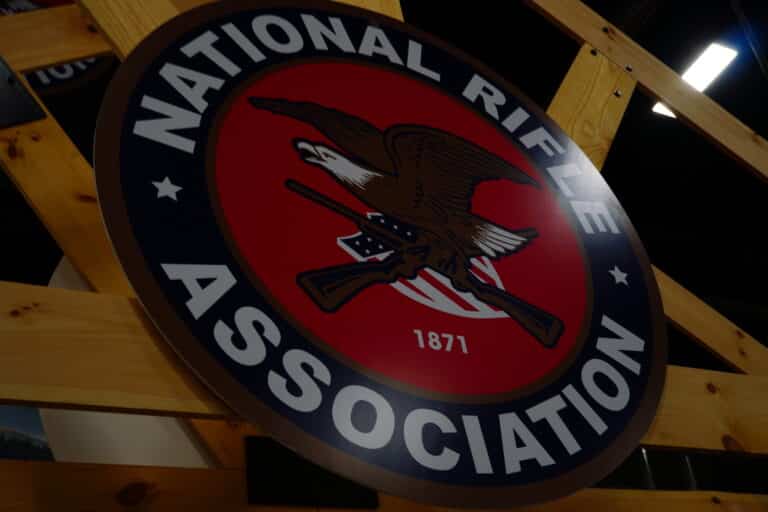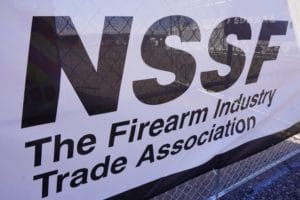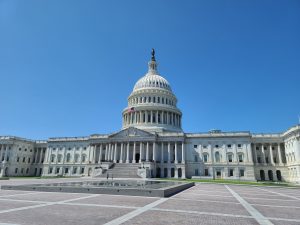A jury is currently considering the fate of the charges against the NRA and its top leadership. Whatever they decide, it’s worth asking if the nation’s largest gun-rights group can ever reach its former heights under any outcome.
The NRA, former CEO Wayne LaPierre, and the other defendants offered up their closing arguments while the New York Attorney General’s office tried to counter them on Thursday. Judge Joel Cohen then read out his instructions to the jury on how to decide the dispute on Friday. The six New Yorkers then headed back to deliberate and didn’t return.
They’ll be back at it on Tuesday. It’s possible–perhaps probable–that they will find the NRA and its leadership didn’t properly administer the non-profit’s funds. They may then recommend the judge force LaPierre and the other individual defendants to repay tens of millions to the NRA as well as ban them from working at any non-profit again. After that, the judge could appoint an overseer to scrutinize the NRA’s governing structure and operations.
If that happens, the gun-rights group will undergo what’s likely to be a significant internal makeover. If, instead, the jury sides with the NRA and individual defendants, it will probably continue on with the strategy it has been pursuing since the controversy began.
Either way, it will be a huge challenge for the group to return to where it was before the corruption allegations surfaced. In 2018, before the scandal blew up, the NRA’s Form 990 shows it brought in over $350 million. The group’s revenue has shrunk every year since then and was down to just over $211 million in 2022.
Of course, it’s hard to know exactly what will happen. The NRA has lost millions of members, and it’s not clear how many it has left. Regaining their trust will probably be a taller task for the NRA than other groups who’ve found themselves in at least somewhat similar circumstances.
Most non-profit scandals don’t drag on this long or reach the point of a jury trial. NRA leadership would likely argue that’s because the AG’s political bias has motivated her to take this case further than others, and the AG would probably respond by saying the NRA refused to come into compliance with the law by making necessary reforms.
Whichever view you take, the bottom line is that perfect examples of what might happen to the NRA really don’t exist.
However, some recent high-profile scandals might still be instructive. Two examples provide some particularly interesting insight into the different paths the NRA might take and how that could work out.
In 2012, the Susan G. Komen Foundation became the center of a public relations firestorm after it dropped grants for breast cancer screening exams at Planned Parenthood (before later reversing itself). The decision alienated a substantial portion of the group’s donor base and subjected them to political attacks. It also increased scrutiny of how the organization was run.
The scrutiny led to numerous stories on founder and CEO Nancy Brinker’s lavish spending habits and questionable governing style. Critics questioned her $400,000 salary. They also raised concerns over her expensive travel habits.
Brinker, who had built Komen into a nationally recognized charity, eventually stepped down to make way for new leadership. But that decision took over a year to take effect and came after she received a 64 percent raise that only generated more controversy.
Komen’s Form 990 shows it brought in just under $200 million in 2012. It shrunk fast after that, and it’s never recovered. In 2023, the group brought in just over $100 million.
In January 2016, the Wounded Warrior Project (WWP) came under fire for extravagant parties and luxury accommodations provided to its leadership and staff during retreats paid for by the veterans’ charity. By March, the group decided to fire its top executives. It cleaned the slate and moved forward under entirely new leadership from outside the organization.
The relatively quick action did not prevent tremendous donor backlash. The group’s 2016 990 shows it brought in over $320 million. It fell to about $225 million the next year and stayed under $300 million the next few years. However, the group has been able to recover its revenue. Last year, it brought in over $400 million.
So, what WWP did to respond to its spending controversy seems to have worked in the long term.
The accusations of misappropriation of funds in the NRA’s scandal eclipses the severity and duration of those for either Komen or WWP. Neither of the other groups ended up embroiled in a court case, and both ended up wiping away their leadership in an effort to win back donors.
The gun-rights group has experienced similar declines in membership and revenue to the other embattled charities. And it appears to still be shrinking.
To this point, the NRA has responded in a way closer to Komen than WWP. Given the makeup of current leadership, which includes LaPierre allies who approved the questionable spending that has them in court, it’s unlikely the group will change course if the judge and jury leave them in charge. If they’re ousted, there’s greater potential for the NRA to see a significant–though unpredictable–shift.
Swift and substantial reform appeared to work better for WWP than the slow and plodding path did for Komen.
It has already been five years since allegations that NRA leadership, especially LaPierre, diverted millions upon millions of the group’s funds toward private flights, five-star hotels, and luxury vacations or sweetheart deals with friends or family. The group is still run by largely the same people it was then, with LaPierre remaining in charge until this month and only stepping down of his own accord.
Even under the best-case scenario imaginable for the NRA, it will be challenging to win back the millions that have now abandoned the group. But it’s not an impossible task.






